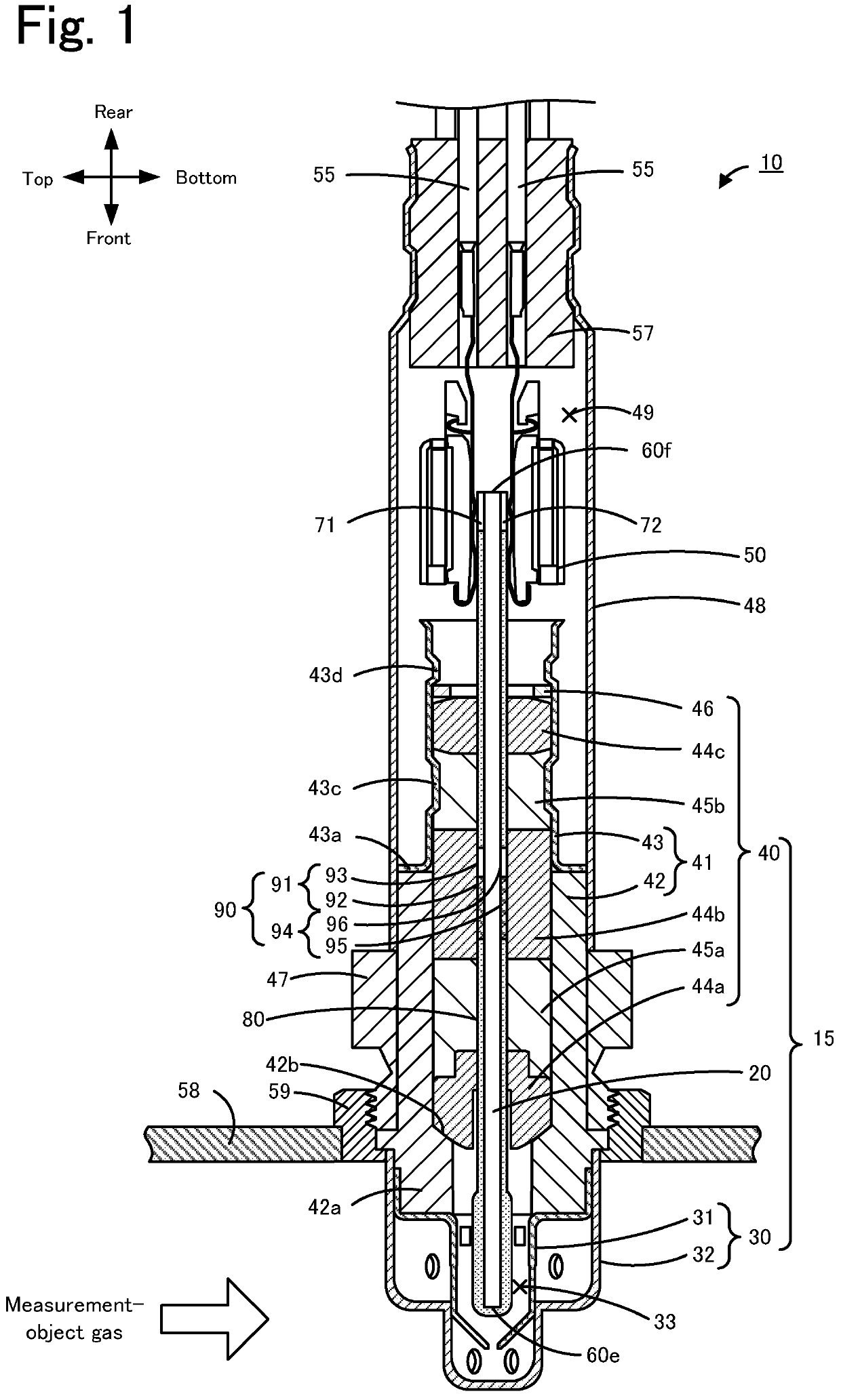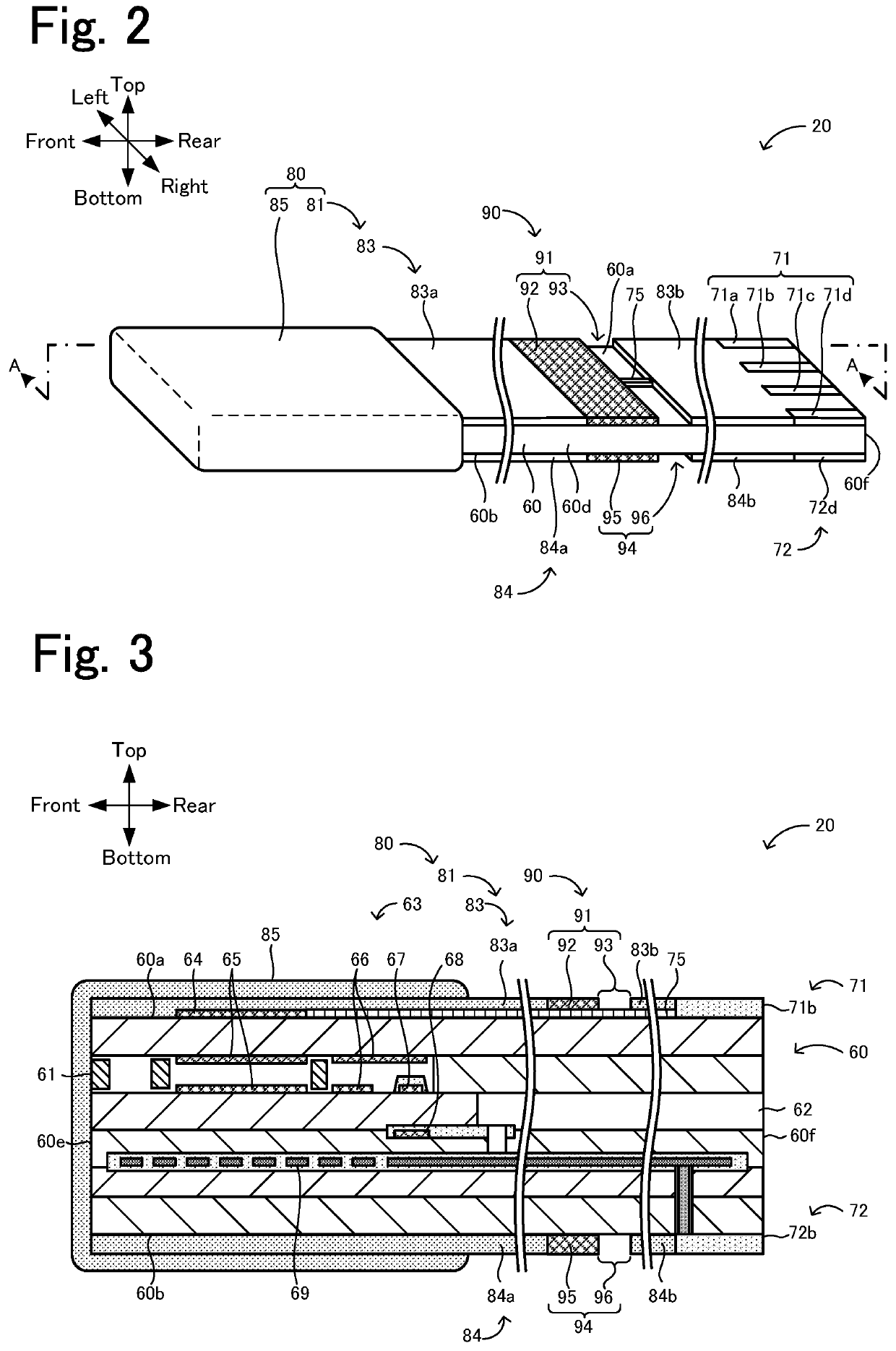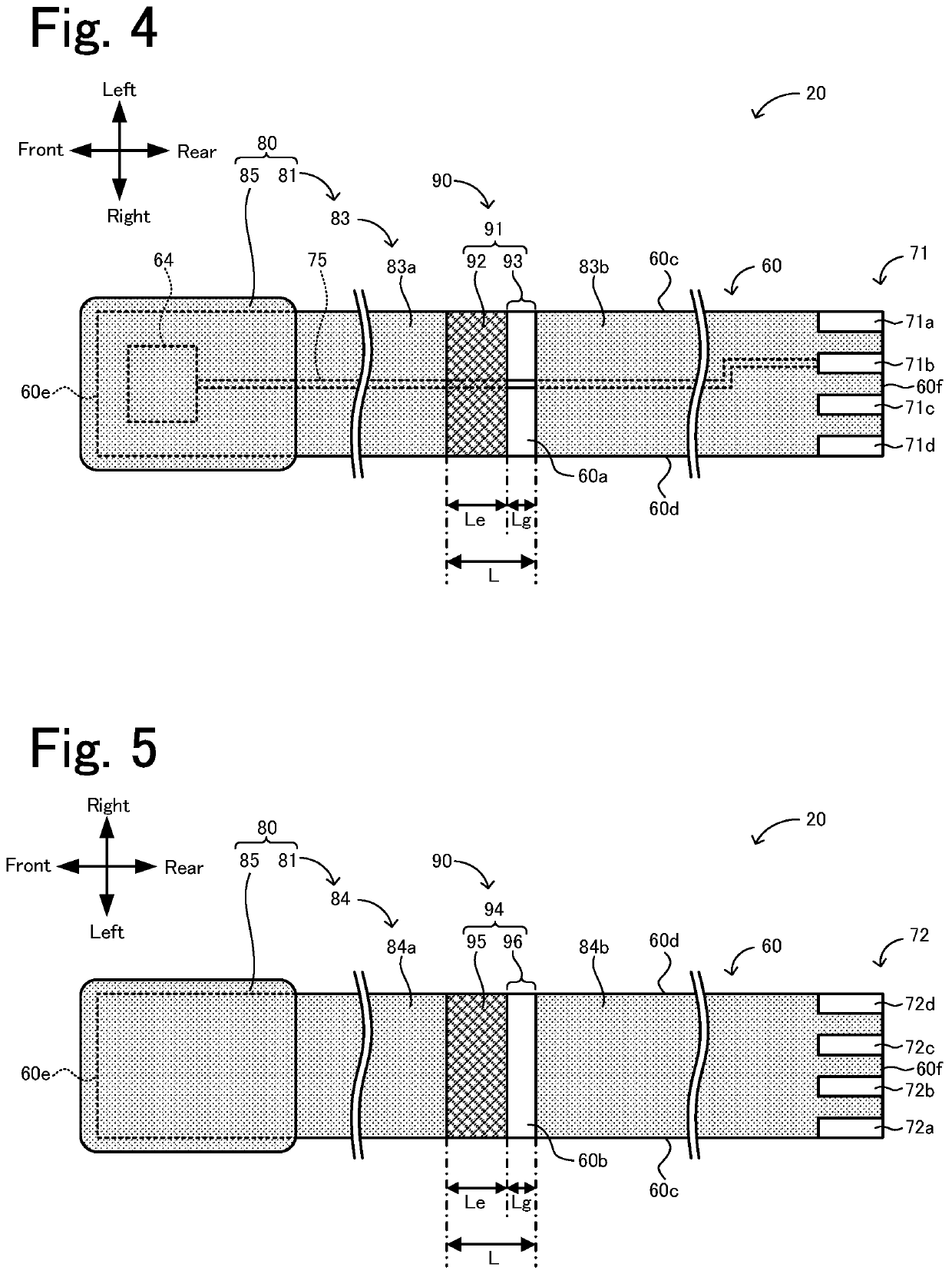Gas sensor
a gas sensor and sensor technology, applied in the field of gas sensor, can solve the problems of connector electrode corrosion and short circuit between the connector electrodes
- Summary
- Abstract
- Description
- Claims
- Application Information
AI Technical Summary
Benefits of technology
Problems solved by technology
Method used
Image
Examples
experimental example 1
[0093]In Experimental example 1, a sensor element that was the same as the sensor element 20 illustrated in FIGS. 2 to 5, except that the sensor element did not include the first water-penetration reduction portion 91, the second water-penetration reduction portion 94, and the outer porous layer 85, was prepared. That is, in Experimental example 1, the first and second inner porous layers 83 and 84 were arranged to cover the entirety of the first and second surfaces 60a and 60b except the region in which the upper and lower connector electrodes 71 and 72 were disposed. The sensor element 20 of the Experimental example 1 was prepared in the following manner. First, zirconia particles containing 4 mol % yttria serving as a stabilizer were mixed with an organic binder and an organic solvent. The resulting mixture was formed into six ceramic green sheets by tape casting. Patterns of electrodes and the like were printed in each of the green sheets. In addition, unbaked porous layers that...
experimental examples 2 to 31
[0094]In Experimental examples 2 to 31, a sensor element that was the same as that prepared in Experimental example 1, except that the sensor element included the first and second water-penetration reduction portions 91 and 94, was prepared. In Experimental examples 2 to 31, the length Le and the porosity of the first and second dense layers 92 and 95, the length Lg of the first and second gap regions 93 and 96, and the length L of the first and second water-penetration reduction portions 91 and 94 were changed as described in Table 1. The unbaked dense layers that were to be formed into the first and second dense layers 92 and 95 after baking were formed using a slurry that was the same as that used for forming the unbaked porous layers in Experimental example 1, except that the amount of the pore-forming material added to the slurry was reduced. In Experimental examples 2 to 31, the porosity of the first and second dense layers 92 and 95 was changed by adjusting the amount of the ...
experimental example 1a
[0103]In Experimental example 1A, a gas sensor 10 having the positional relationship illustrated in FIG. 8 was prepared by the above-described production method. The gas sensor 10 of Experimental example 1A was prepared using a sensor element 20 that was the same as the sensor element 20 prepared in Experimental example 27 except that the positions of the first and second water-penetration reduction portions 91 and 94 in the front-to-rear direction were changed. In the gas sensor 10 of Experimental example 1A, the insulators 44a to 44c were sintered ceramic bodies composed of alumina. The lengths of the insulators 44a, 44b, and 44c in the axial direction were 8 mm, 10 mm, and 4.5 mm, respectively. The porosity of the insulators 44a to 44c determined using a SEM image was less than 1%. The compacts 45a and 45b were formed by molding a talc powder. The amount of the talc powder used was adjusted such that an adequate sealing load was applied to the compacts 45a and 45b inside the cyli...
PUM
| Property | Measurement | Unit |
|---|---|---|
| porosity | aaaaa | aaaaa |
| length | aaaaa | aaaaa |
| length | aaaaa | aaaaa |
Abstract
Description
Claims
Application Information
 Login to View More
Login to View More - R&D
- Intellectual Property
- Life Sciences
- Materials
- Tech Scout
- Unparalleled Data Quality
- Higher Quality Content
- 60% Fewer Hallucinations
Browse by: Latest US Patents, China's latest patents, Technical Efficacy Thesaurus, Application Domain, Technology Topic, Popular Technical Reports.
© 2025 PatSnap. All rights reserved.Legal|Privacy policy|Modern Slavery Act Transparency Statement|Sitemap|About US| Contact US: help@patsnap.com



